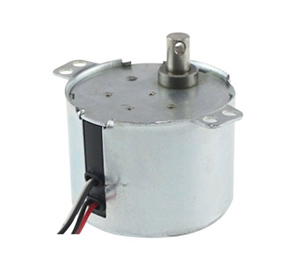Synchronous Motor Buying Guide
A synchronous motor is an AC motor that rotates at a synchronous speed by interacting with the excitation magnetic field of the DC power supply and the rotating magnetic field of the armature to generate torque.
Today, we will introduce some tips of nuying, the characteristics and application of synchronous motors. We hope that after reading this article, you can choose to buy a synchronous motor that suits you.
Buying tips
When purchasing a synchronous motor, many buyers do not know what standards they should refer to and what aspects to consider when buying a synchronous motor. In fact, there are still quite a few aspects that need to be considered.
First of all, you should judge how much torque is needed. Static torque is one of the main parameters for selecting a motor. When the load is large, a large torque motor is required. When the torque index is large, the shape of the motor is also large.
The second is to judge the running speed of the synchronous motor. When the speed requirement is high, the motor with larger phase current and smaller inductance should be selected to increase the power input. And use a higher supply voltage when selecting the driver. Select the installation specification of the motor: such as 57, 86, 110, etc., mainly related to the torque requirements.
Determine the requirements for positioning accuracy and vibration. Determine whether subdivision is required and how many subdivisions are required.
There are also some caveats: the holding torque of a synchronous motor is similar to what a traditional motor calls "power". Of course, there are essential differences. The physical structure of the stepping motor is completely different from the AC and DC motors, and the output power of the motor is variable. You need to know which type of motor is usually selected according to the required torque. (That is, the torque of the object to be driven.)
Features
Before buying a synchronous motor, you need to know the characteristics of a synchronous motor.
Since the synchronous motor can run under the advanced power factor by adjusting the exciting current, it is beneficial to improve the power factor of the power grid. Therefore, large equipment, such as large blowers, water pumps, ball mills, compressors, rolling mills, etc., are commonly driven by synchronous motors. This advantage is particularly prominent when synchronous motors are used in large equipment with low speed.
In addition, the rotational speed of a synchronous motor is completely determined by the mains frequency. When the frequency is constant, the speed of the motor is also constant, and it does not change with the load. This feature is of great significance in some transmission systems, especially multi-machine synchronous transmission systems and precision speed regulation and speed stabilization systems.
The operating stability of the synchronous motor is also relatively high. Synchronous motors generally run in an overexcited state, and their overload capacity is greater than that of the corresponding asynchronous motors. The torque of an asynchronous motor is proportional to the square of the voltage, while the torque of a synchronous motor is determined by the product of the voltage and the internal electromotive force generated by the excitation current of the motor. That is only proportional to the power of the voltage.
When the grid voltage suddenly drops to about 80% of the rated value, the torque of the asynchronous motor often drops to about 64%, and stops running due to the immobile load. However, the torque of the synchronous motor does not drop much, and the stable operation of the motor can be ensured by forced excitation.
Applications
If you understand the purpose of a synchronous motor, you can be more aware of whether you need to buy a synchronous motor.
The synchronous motor has the function of improving the power factor of the power grid, and the speed does not change with the change of the load. Therefore, in the occasions where speed regulation is not required but the power is large, such as driving large air compressors, pre-grinders, blowers and water pumps, etc. Synchronous motors are often used.
In addition, the synchronous compensation machine is actually a synchronous motor running at no load. It is mainly used in substations or large industrial and mining enterprises to adjust the reactive power of the grid and compensate for the power factor of the grid.

